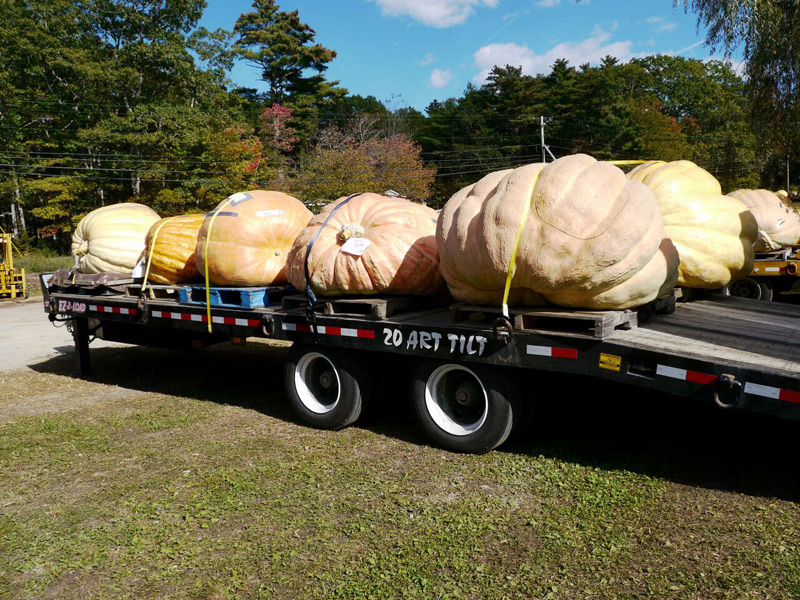
Atlantic Giant pumpkins
The 2017 Damariscotta Pumpkinfest & Regatta is history. Only a few of the dozens of ginormous, wonderfully decorated gourds remain to be seen in the Twin Villages area. The holidays are coming. But for those intend to be serious Pumpkinfest Weigh-off contenders in 2018, now is time to prepare one’s pumpkin patch for next year’s growing season.
Richard Powell, who was the 2015 Giant Pumpkin Volunteer Grower Weigh-off second-place winner with his 1,548-pound Atlantic Giant pumpkin, provides some important information for next season’s growers.
Powell likes to start the week after harvest. Most successful growers have developed a plan that works for them but will generally agree on a few basic necessities. Below is a list of steps Powell takes in the order they are listed:
1. Remove all roots and vines from this year’s plant to help prevent spread of plant disease. This is a great time to look at root and vine condition. The length and size of the roots can tell one a lot about the quality of one’s soil.
2. Analyze the soil by digging into it at different locations for inspection and samples for a good soil test. How deep can you easily dig with your bare hand? Six inches will work, but but a foot is better.
3. Add nutrients, compost, PH-adjustment material, and sand or gypsum for clay soil as needed. A good soil test can help but unless one thought ahead, the results can take weeks at best.
4. Till the garden as deep as possible for good root growth. (This is one area that the expense of a powerful tractor with a tiller that goes in eight inches or more is wise.) Now is the time to plant a winter cover crop. Powell prefers crops such as winter rye this time of year because it will continue to grow in the spring and holds nutrients until it is tilled in as the pumpkin plant grows.
5. Let the patch rest and absorb the amendments added. After a couple of good rainy days, and before April, do another soil test. You will still have time for adjustments.
6. Fall is also a good time to lay out future plant and greenhouse location. If you use hoop houses, as Powell does, you can install the hoops now.
7. Powell says the most important thing to do is to communicate with other experienced growers. “We are fortunate to have a large number of successful proven pumpkin growers in Maine, and I have always found everyone very helpful,” he said. “Good luck!”



